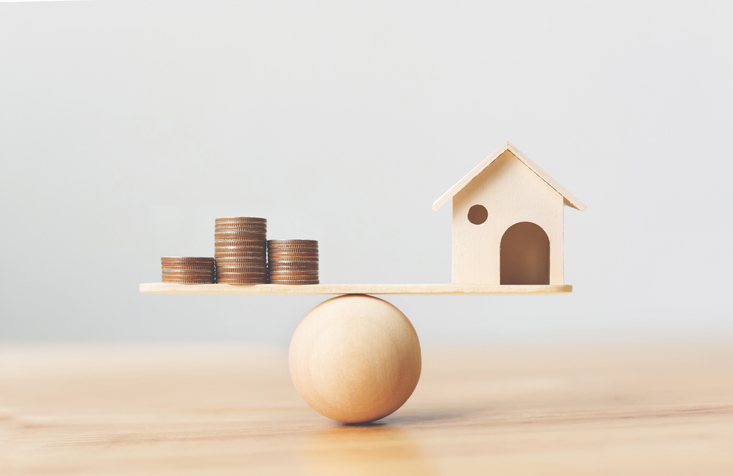
Buying a home is one of the biggest decisions you’ll ever make in your lifetime. Also, it will probably be the most important financial decision of your life. The idea of finally owning a home can be very emotional, and it is easy to make decisions based on emotions rather than logic.
If you are trying to find the best value for your money, here are six steps that will help you learn how to get the most out of your first home purchase.
Step 1: Find houses that are within your budget and worth your investment
The first step in buying a house is to find houses that are within your budget and worth your investment. This process is primarily done through house inspection, but you also want to make sure that the house is on the market for a reasonable time before you purchase it and that not too many people are trying to buy it.
There are three ways to evaluate if the property is worth its price. One way is by looking at real estate listings online, finding out which houses are currently on the market, and then checking them against your criteria of what you’re looking for. The second way is through friends or family members who already own one of these properties, have recently purchased one of these properties, or have lived in one of these homes before. The third way would be using a home inspection checklist which will give you all of the information you’ll need to make an informed decision.
Step 2: Map your monthly expenses, earnings, and liabilities
What are the main steps involved in mapping out monthly expenses, earnings, and liabilities? Budgeting is an important task that can help you avoid financial stress. It is important to track your expenses and try to limit the amount of money that you owe.
The main steps involved in mapping out your expenses, earnings, and liabilities are as follows:
• Track your expenses and try to limit the amount of money that you owe
• List all monthly bills that will be paid in the new property (water, gas, electricity)
• List all monthly debts that will be used to finance the property (mortgage, credit cards)
• List all income that will be used to pay these bills/debts (paycheck, savings account)
• List any work projects or side gigs that might help fund your purchase
This step is very important because it helps you to analyze how much money can be saved or made by making certain changes to your lifestyle. It also provides you with a general idea of what kind of home you need to buy as well as what type of property suits your needs.
Step 3: Determine what the market will bear
The initial market size is important for determining what to expect in the future. This is because the value of your property will be primarily determined by how many others are looking to buy similar kinds of properties.
You can determine this by looking at what other properties are on the market and how much they are selling for. The less expensive properties that are currently on the market, indicate that there is a lot of demand for them. If you want to sell your property quickly one day in the future, it’s best to look into properties that have already sold quickly.
Step 4: Make a list of your requirements for a home
It is important to create a list of requirements for the perfect home before you start looking for houses. The requirements are not about what you need but what you want.
Before you buy your first home, be sure to make a list of all the things that are important to you. This includes your budget, features, and amenities. Once it is complete, be sure to share it with your realtor so they can help find the perfect house for you.
Now that we have our criteria in place, let’s talk about how to go through the process of setting a budget for your next house!
Step 5: Set a budget for the property you want to buy
Determine what is your personal definition of “affordable?”
What does affordable mean to you? This is a simple question with a complex answer. Some people will say “affordable” is anything less than $500,000. But that’s not the case for everyone. There are many people who believe that “affordable” means a home that costs less than $200,000. The answer to this question will primarily depend on your income and monthly expenses.
Calculate your monthly expenses
Buying a home is a major financial commitment. It takes time and careful planning to ensure that you can afford your new house, but it’s worth the effort. Even if you borrow money from family or friends, you’ll still need to calculate how much you can afford before making the purchase.
Assess what percentage of your monthly income would go towards housing
With the average price of a house in the U.S. reaching nearly $500,000, many people are finding it difficult to afford a home on their salary alone. To make things even more challenging, the mortgage interest deduction has been capped at $750,000 for new purchases. As a result, it’s now more important than ever to figure out how much your housing costs will be compared to your income.
Calculate the median home price in your area
Median home prices are a great way for first-time buyers to estimate how much they can afford. The median price is the point at which half the homes in the area sell for more, with the other half selling for less. For example, if you want to know what your monthly payment would be on a $200,000 property with a 30-year mortgage, there is an easy formula you can use: $200,000 divided by 360 (total months). If the median home price in your desired area is above this value (what you can afford in a single month), then you should probably look for a home in a different area.
Step 6: Make an offer on the property that you have listed as your top choice
Finally, it’s time to make an offer on the property you have listed as your top choice! It is a good idea to make a quick offer on the property if it’s your first choice. If you are looking for a bargain, make an offer of around 90-95% of the asking price. If the seller accepts, then you will have bought your first home at a very reasonable price.
You want to make sure that you are in the driver’s seat in this negotiation. Make sure that your offer is in writing, with enough information to move this process along quickly. This will allow you to avoid any mishaps and get the property that you really want.
Conclusion
The process of buying a house is not easy, and there are many steps involved. Having a licensed Realtor in your corner to help you navigate the process can ease the stress greatly. You don’t have to “go it alone”! Contact me to schedule a no obligation consultation today.
Image credit: marchmeena29 | iStock | Getty Images Plus


